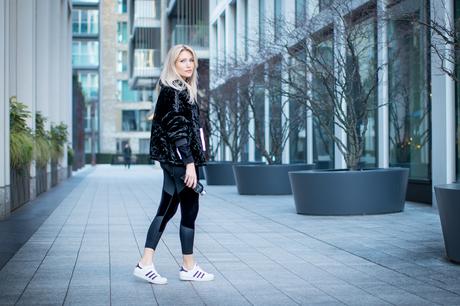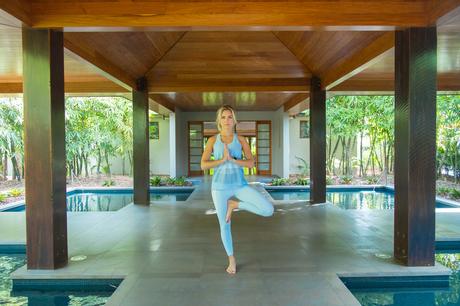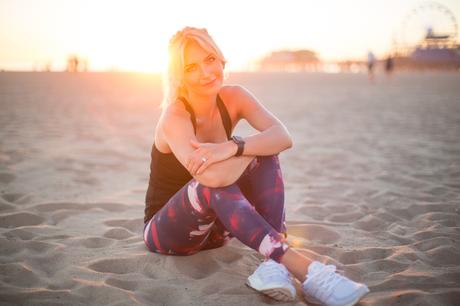I recently had the opportunity to share some thoughts with FashionMonitor.com for an interview ahead of a panel at the Festival of Marketing, on which I sat to discuss trends in the fitness industry. The interview caused me to think quite alot about several of the challenging topics posed to me. FashionMonitor presented a gently precised version of the interview HERE, but for those looking to explore the more complete answers I scribed, click MORE below to get my full thoughts on the trends shaping the industry at present and over the coming years, along with perceptions surrounding the influencer marketing world.
1. What trends have you witnessed within fitness in the past few years?
I started working in the industry over ten years ago as a PT in a commercial gym, Esporta (which has long since been acquired by Virgin Active) and there have been many trends that have come and gone over the years. But to mention 5 more broad changes I see, it would be
- i) PT as an occupation has gained mass popularity – social media has transformed and glamourised the job of working in fitness.
- ii) ‘The gender swap’ – women train more like men and men train more like women.
- iii) With mass popularity in social media and health there’s been a sort of ‘information overload’,
- iv) This has sparked the growth and evolution of countless different flavours of ‘fitness communities’
- and finally v) sports fashion ‘Athleisurewear’ has completely reinvented itself.
i) PT-ing ten years ago didn’t carry the same cache that the occupation enjoys now. Working in what certainly was a male dominated job was considered a bit more unusual. It wasn’t anywhere near as glamourized as it is today – Instagram as a fitness marketing tool for one didn’t exist. Today being a PT is associated with beach workouts, raw pressed juice on tap, and gorgeous bodies clad in expensive ‘athleisurewear’, not to mention crisp designer sneakers. For a lucky few this may be the case but more often than not this couldn’t be further from the truth, something I’ve written about on my blog. It’s a tough slog building a sustainable fitness business as a personal trainer!
ii) ‘The gender swap’ may be a generalisation perhaps, but in my experience more often than not, it used to be the case that women would focus on cardiovascular training and men would focus on weight training. As a PT, trying to convince a woman to venture into the male dominated free weight area was not easy. There was the eternal fear of ‘getting bulky ‘. I remember distinctly walking into a weights area and being asked by a pretty stacked guy if I was lost. I think for women, encouraging weight training has been empowering, women feel bad ass and it has certainly introduced more fun, varied and effective training. For men, I see the change that it’s more acceptable and ‘mainstream’ to focus on mindfulness, yoga, meditation etc. So overall, men and women have merged somewhere in the middle.
iii) ‘Information overload’ – with the explosion of fitness fashion, yoga and gym studios etc people through osmosis are more informed than before. There’s a real thirst for knowledge. People don’t just ask what they should train but also why. That’s something that rarely happened a few years ago. This has also brought with it MISinformation; the ubiquitous nature of advice is a potential danger to those who aren’t aware of the risks, and those ‘advisors’ operating without appropriate qualification can be easily elevated in this new social media world which introduces additional risk factors for people’s wellbeing and training regimes.
iv) You can find fitness communities everywhere today and brands recognise its power. As an example, today if you walk into a store, for example LuluLemon, you’re not just buying a pair of leggings, you’ve become part of a very large community. You’ll most likely be receiving newsletters not only promoting new products but you’ll find inspiring interviews, healthy recipes, invites to free yoga classes, workshops etc.
v) Athleisurewear – there has been an explosion of fitness apparel on the market. Large brands like Nike and Adidas are leading the way but I get several start up fitness brands reaching out on a weekly if not daily basis asking if I’d be interested in featuring their leggings.
2. Which brands do you think are key disruptors right now?
My challenge in response would be ‘define ‘disruptor’. No fitness brands are doing to fitness what Uber did to transport on demand, nor really what Amazon has done to bricks and mortar retailing. They are however tapping into the trends I describe above; social media, community, innovation, gender stereotype developments in fitness.
- bespoke tailoring is a thing. Adidas custom body scans, the speed factory that scans your foot and 3D prints a shoe that fits within the hour whilst you wait.
- Conscious sustainable production. Small batch creations imbued with ethical values, like the Adidas Parley for the Oceans collaborations.
There have been a wave of new brands on the market over the last few years but Adidas and Nike are still the dominant players – it’s hard to see this model being disrupted, but rather, evolved….
3. How do you see social media progressing in the future?
It’s an interesting question.
- On the one hand people have become more mindful of how they use social media, perhaps more selective and time conscious (setting reminders etc), tuning out of content that imparts stress,
- On the other hand brands are spending more money to work with influencers than ever before, as well as finding new and innovative ways of promoting themselves. There are constant trends coming and going. At the moment, I sense the trend is very much for a brand to be ‘passionate’ about something – whether it’s taking a stand for the climate, following in Greta Thunberg’s footsteps, or being a ‘conscious consumer’, gender equality, or matters of migration.
- Not only have *brands* invested in social media, it’s becoming ever more of a platform for activists, politicians as well as influencers. It is a way to excite and rile up communities.
- As the young Social media user base evolves and grows up, so too will the platforms. New platforms spring up like TikTok for new users, but the core platforms that for the base of social media have been established now.
- The way we interact with those will change. People engage in longer form content but also the attention span is super short. It is a medium of significant contradictions.

Primarily, wellbeing and health and fitness. Going back to my previous point (above) there is a real trend online now to be or be seen to be very passionate about a cause, whether it be the environment, feminism, migration etc but my platform is and will carry on only being about health. It’s completely politically neutral. I have grown up in Sweden, I have cared about nature and the environment since birth, but these are broadly private views for me on my platforms.
5. How do you drive engagement on Instagram?
You need to post consistent, new, relevant and engaging content, dabble with new formats and placements, go stories, optimise for mobile first creative (vertical, sound on, key message in the first 3 seconds, fun stickers etc) – it’s got to be candy floss!!
6. What is the key to a healthy, balanced diet?
The longer I’ve worked in the industry, the more I’ve realised that everyone is different and reacts differently to different foods. In order to enjoy and stick to a healthy way of eating you need to find something that you enjoy which is realistic. Anyone can stick to ‘the perfect diet’ if they were committed enough. At the end of the day it’s a question of what do you want more… the ice-cream or the six pack. For me, I like to think as long as I’m healthy most of the time, at 80% of my ‘best’, when I really wish to up the game before a holiday or something I’ve only got to increase my intensity/commitment by 20% – totally reasonable and realistic. What I would say is, it’s about portion control, eating quality foods (not eliminating any macros from the regimen – fat, protein, carbs), and timing – aiming to eat small amounts, regularly throughout the day. Fresh, locally sourced produce is best.
7. Which influencers, celebs or activists do you admire right now?
I follow a bunch of different people for different reasons. I’m a big fan of Yoga with Adrienne, I also love interior design and Sophie Paterson is a definite fave. I enjoy Sheerluxe for fashion and chit chat.
8. What do you think is the modern definition of wellness
I think wellness is timeless in the sense that it remains a product of its key ingredients – nutrition, movement/exercise and mindfulness (recover, sleep, etc). The optimal blend of those ingredients I believe differs from person to person depending on their metabolism, human makeup etc.
Perhaps the modern definition is based more on what’s realistic given the time constraints and lack of movement in most people’s everyday lives. For many who sit for 10 hours a day, walking for 40 minutes to work can be the most they move in a day. It’s a case of incorporating as much ‘wellness’ as possible, in as realistic and achievable a manner as possible.
An additional dynamic may well be the auto-recognition and normalisation of stress and mental distress; wellness isn’t just about *physical* wellness. We all face psychological struggles of some sort and the contemporary narrative around this is far more accepting, which in turn helps with wellness.
9. Where is the best place you’ve ever travelled to and what did you love about it?
I lack the words to convey my wonder for the Maldives – it’s like stepping into a postcard, a photoshopped existence where the saturation has been maxed out. The turquoise waters are impossible, the temperature delicious, the relief so gentle and shallow, the sand is like flour under your feet and every morning you wake up in awe as to how beautiful the world truly can be. I return from the Maldives as if I’ve been somewhat reborn. From one’s first trip, everywhere else is ‘just not quite the Maldives’ thereafter.
10. Do you think there is a bigger duty of care to audiences when dealing with the topic of wellness?
Yes, it’s why many of my blog posts have always strayed toward the ‘biomechanics manual’ rather than the 1-minute read. I am and have always been very careful as to what I advise, what I choose to promote and how I word my posts related to health online. There is a big difference between saying ‘here’s a delicious salad recipe’ and ‘this salad recipe will cure cancer and make you skinny’. Someone who may not be qualified to promote fitness online, may encourage someone to get up off the sofa that day – but on the other hand, that person may be more likely to sustain injury as the advice given isn’t necessarily safe or pursuant to a professional beat practice. It’s a tough one. Do we start regulating sites?
11. What’s item can you not leave home without?
Four critical things; keys, phone, wallet, air pods.
12. What makes you angry?
Untrustworthiness and unreliability…. People who let you down, or lie, or try to screw you over.
13. Do you think it is the brand or the influencers responsibility to ensure authenticity and transparency?
I think it’s both parties responsibility. If you are sharing something on your platform, you’d hope it’s authentic – either you genuinely love the product, have been using it for year, or have tried it and can vouch for it. However, there will be times when the brand needs to point out certain details that may be unknown to the influencer. It’s a capitalist world out there and advertising buys into that wholeheartedly; people are going to try and sell stuff. But if content is flagrantly advertorial, you’ll know – and consumers are too smart for that!!
14. What kind of email PR pitch would turn you off immediately?
I always like a face to face meeting with PR, as it adds a touch of old school human interaction, and helps to build rapport on both sides. However in my line of work, I see poor email outreach quite often. There’s a wide array of approaches; at the weaker end of the spectrum are lazy emails – dripping with spelling mistakes, and rarely getting my name right. That doesn’t mean the pitch will be weak, but if the PR outreach demonstrates a clear lack of insight as to who you are, by name or substance, it’s unlikely to bear fruit thereafter. Detail matters in order to find the right fit. Poorly structured, rambling emails that don’t make it totally clear what the pitch is about are a major turn off too. There’s too much noise in any given inbox, and crisp PR pitches cut through easily. Shorter, sweeter, more precise and to the point makes everyone’s job easier
.
15. Who takes your pictures?
Whilst it’s not his full-time job, my husband is a professional photographer, and when he can, he will always take my pictures. It is quite a help having your production facilities in house as you can move as fast as you want!
16. What do you miss most about Sweden?
Mainly the proximity to nature – the fresh, invigorating smell of the outdoors, actually being able to see the horizon, as well as the proximity to the ocean. I also miss the food, especially all the fresh fish, and of course the cinnamon buns! It’s all about balance.






